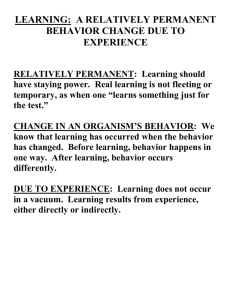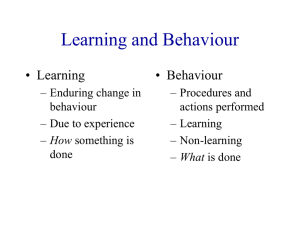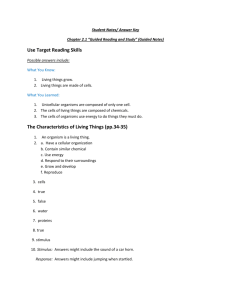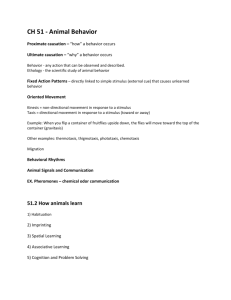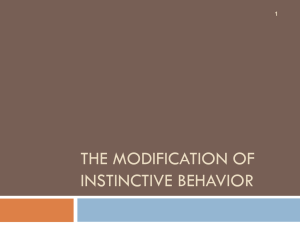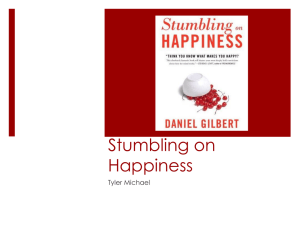LCog Read ch 2
advertisement
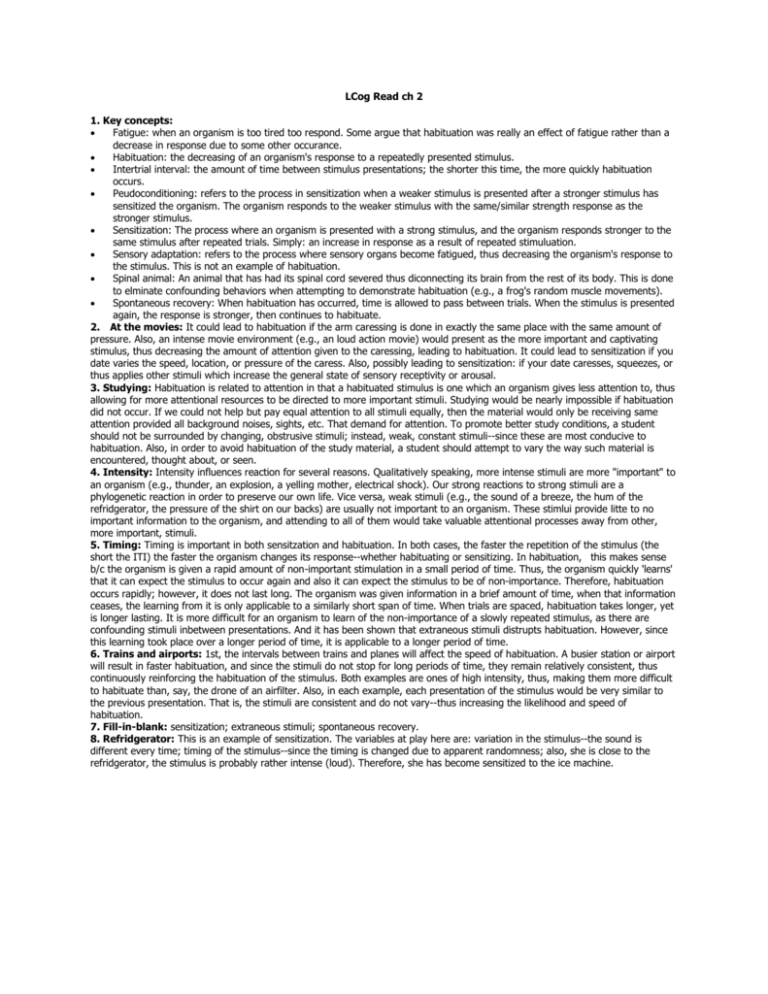
LCog Read ch 2 1. Key concepts: Fatigue: when an organism is too tired too respond. Some argue that habituation was really an effect of fatigue rather than a decrease in response due to some other occurance. Habituation: the decreasing of an organism's response to a repeatedly presented stimulus. Intertrial interval: the amount of time between stimulus presentations; the shorter this time, the more quickly habituation occurs. Peudoconditioning: refers to the process in sensitization when a weaker stimulus is presented after a stronger stimulus has sensitized the organism. The organism responds to the weaker stimulus with the same/similar strength response as the stronger stimulus. Sensitization: The process where an organism is presented with a strong stimulus, and the organism responds stronger to the same stimulus after repeated trials. Simply: an increase in response as a result of repeated stimuluation. Sensory adaptation: refers to the process where sensory organs become fatigued, thus decreasing the organism's response to the stimulus. This is not an example of habituation. Spinal animal: An animal that has had its spinal cord severed thus diconnecting its brain from the rest of its body. This is done to elminate confounding behaviors when attempting to demonstrate habituation (e.g., a frog's random muscle movements). Spontaneous recovery: When habituation has occurred, time is allowed to pass between trials. When the stimulus is presented again, the response is stronger, then continues to habituate. 2. At the movies: It could lead to habituation if the arm caressing is done in exactly the same place with the same amount of pressure. Also, an intense movie environment (e.g., an loud action movie) would present as the more important and captivating stimulus, thus decreasing the amount of attention given to the caressing, leading to habituation. It could lead to sensitization if you date varies the speed, location, or pressure of the caress. Also, possibly leading to sensitization: if your date caresses, squeezes, or thus applies other stimuli which increase the general state of sensory receptivity or arousal. 3. Studying: Habituation is related to attention in that a habituated stimulus is one which an organism gives less attention to, thus allowing for more attentional resources to be directed to more important stimuli. Studying would be nearly impossible if habituation did not occur. If we could not help but pay equal attention to all stimuli equally, then the material would only be receiving same attention provided all background noises, sights, etc. That demand for attention. To promote better study conditions, a student should not be surrounded by changing, obstrusive stimuli; instead, weak, constant stimuli--since these are most conducive to habituation. Also, in order to avoid habituation of the study material, a student should attempt to vary the way such material is encountered, thought about, or seen. 4. Intensity: Intensity influences reaction for several reasons. Qualitatively speaking, more intense stimuli are more "important" to an organism (e.g., thunder, an explosion, a yelling mother, electrical shock). Our strong reactions to strong stimuli are a phylogenetic reaction in order to preserve our own life. Vice versa, weak stimuli (e.g., the sound of a breeze, the hum of the refridgerator, the pressure of the shirt on our backs) are usually not important to an organism. These stimlui provide litte to no important information to the organism, and attending to all of them would take valuable attentional processes away from other, more important, stimuli. 5. Timing: Timing is important in both sensitzation and habituation. In both cases, the faster the repetition of the stimulus (the short the ITI) the faster the organism changes its response--whether habituating or sensitizing. In habituation, this makes sense b/c the organism is given a rapid amount of non-important stimulation in a small period of time. Thus, the organism quickly 'learns' that it can expect the stimulus to occur again and also it can expect the stimulus to be of non-importance. Therefore, habituation occurs rapidly; however, it does not last long. The organism was given information in a brief amount of time, when that information ceases, the learning from it is only applicable to a similarly short span of time. When trials are spaced, habituation takes longer, yet is longer lasting. It is more difficult for an organism to learn of the non-importance of a slowly repeated stimulus, as there are confounding stimuli inbetween presentations. And it has been shown that extraneous stimuli distrupts habituation. However, since this learning took place over a longer period of time, it is applicable to a longer period of time. 6. Trains and airports: 1st, the intervals between trains and planes will affect the speed of habituation. A busier station or airport will result in faster habituation, and since the stimuli do not stop for long periods of time, they remain relatively consistent, thus continuously reinforcing the habituation of the stimulus. Both examples are ones of high intensity, thus, making them more difficult to habituate than, say, the drone of an airfilter. Also, in each example, each presentation of the stimulus would be very similar to the previous presentation. That is, the stimuli are consistent and do not vary--thus increasing the likelihood and speed of habituation. 7. Fill-in-blank: sensitization; extraneous stimuli; spontaneous recovery. 8. Refridgerator: This is an example of sensitization. The variables at play here are: variation in the stimulus--the sound is different every time; timing of the stimulus--since the timing is changed due to apparent randomness; also, she is close to the refridgerator, the stimulus is probably rather intense (loud). Therefore, she has become sensitized to the ice machine.
